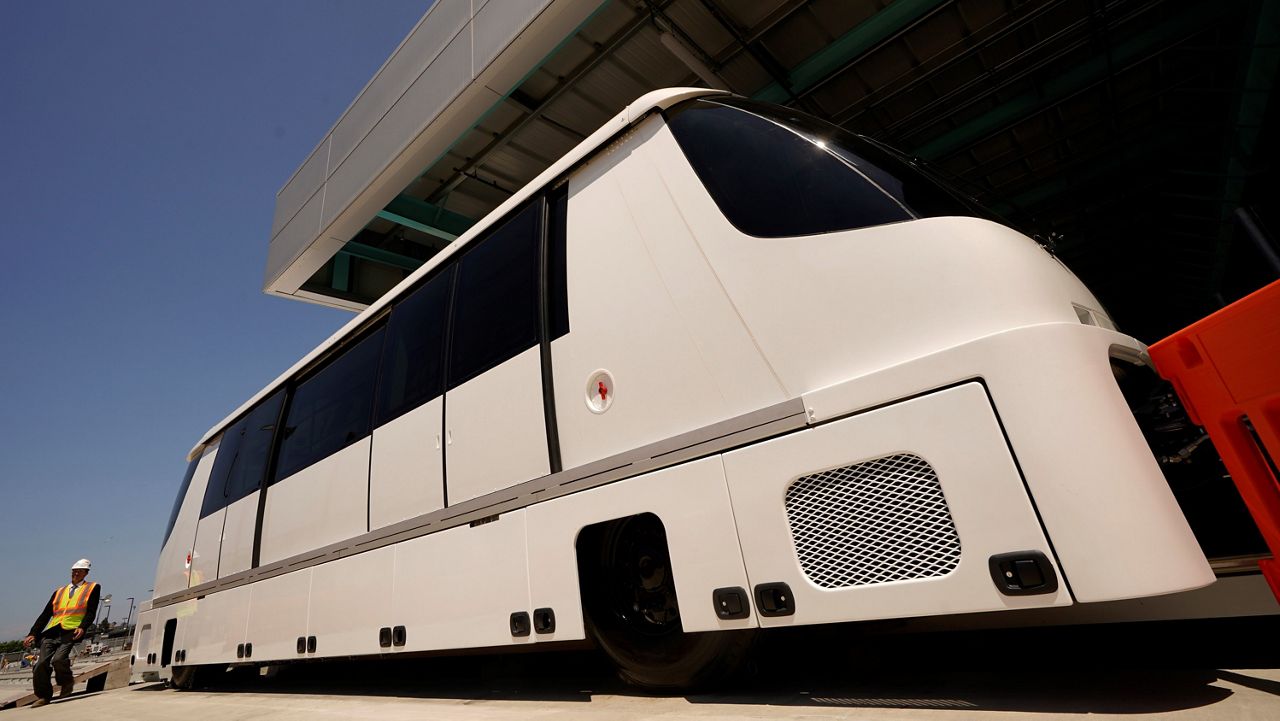LOS ANGELES — The Los Angeles City Council voted Friday to increase the total cost of LAX’s significant delayed Automated People Mover from $2.9 billion to $3.34 billion to settle legal claims and set a date of operation for January 2026.
Council members voted 12-0 to allocate an additional $400 million for the project — a recommendation forwarded by the council’s Trade, Travel and Tourism Committee and the Los Angeles Board of Airport Commission.
Council members Curren Price recused himself while Heather Hutt and Imelda Padilla were absent during the vote.
According to LA Board of Airport Commission, the funding is needed to address claims filed by the contractor, LAX Integrated Express Solutions, also known as LINXS, over issues related to compensation and production.
“These delays have been extremely frustrating,” Councilwoman Traci Park, who chairs the trade committee, said on Aug. 8.
“But today is a new day, and in spite of these challenges, I see this as an opportunity to learn how to draw lessons from our experiences to ensure that what delayed this project doesn’t happen again because the Automated People Mover isn’t the last project of LAX by an means — nor is it the only public works projects in Los Angeles,” Park added.
Park — who represents the 11th District, including LAX and other West LA and coastal neighborhoods -- said she intends to introduce a motion to ensure problems encountered with the Automated People Mover won’t occur on other modernization projects at the airport or other capital projects the city has in the future.
The LAWA board in May already approved some $200 million in additional money for the project, to address similar claims submitted by the contractor — but that money would be included as part of this $400 million, increasing the total settlement to about $550 million.
An additional $50 million will be part of a contingency that may or may not be allocated fully, according to airport officials. The settlement agreement largely covers already completed extra work by LINXS dating back to August 2018, and a longer than anticipated construction timeline.
The Automated People Mover is a piece of the airport’s larger $30 billion project to update terminals, gates and airport signage.
The project could be completed on Dec. 8, 2025, and begin operation in January 2026 — in time for world events taking stage in the Los Angeles region, including the 2026 FIFA World Cup and the 2028 Olympic and Paralympic Games. The electric train system on 2.25 miles of elevated rail with six stations will be available to ticketed passengers, their guests and airport employees for free.
LA World Airports CEO John Ackerman explained that the delays to the project were caused by COVID-19, labor and production conflicts.
“This remains a very, very complicated project. We’re entering a phase where we’re moving from the construction of the guideways and the tracks and the stations and the vertical circulation that connects this system to the airport,” Ackerman said on Aug. 8. “We’re moving into the actual train testing phase.”
He noted that if the settlement is not approved, the city is likely at some point to be in a significant litigation with the developer.
Even with City Council’s approval, airport officials can still pull back if they aren’t “100% satisfied” and confident in the delivery of the project. Los Angeles taxpayers have “zero exposure” to the project, according to Ackerman.
The airport broke ground on the Automated People Mover in March 2019. It’s estimated that it will eventually carry some 30 million passengers a year, resulting in 117,000 fewer vehicle miles traveled per day, according to LAWA’s website.
LAX’s train will operate 24/7, with trains arriving at stations every two minutes during peak hours from 9 a.m. to 11 p.m. The elevated rail will connect to six stations: three inside the Central Terminal Area; one at LAX’s Economy Parking facility; one connecting to Metro’s LAX/Metro Transit Center station with transfers to the C (Green) and K lines; and one at LAX’s Consolidated Rent-A-Car facility. Total end-to-end travel time will be 10 minutes with a top speed of 47 miles per hour.



